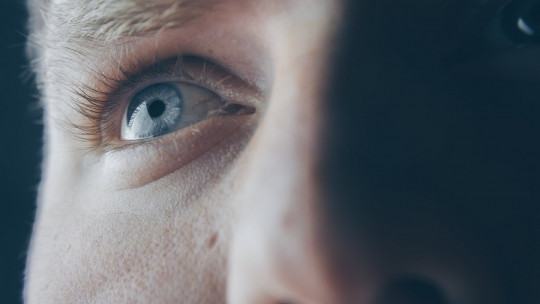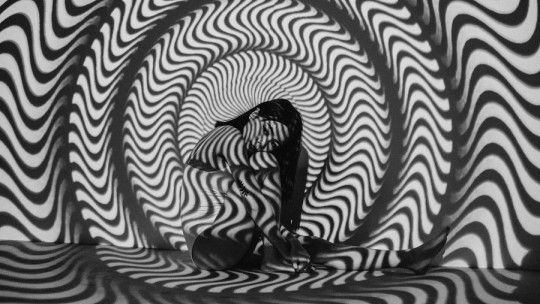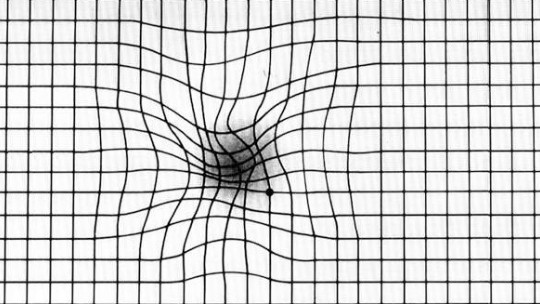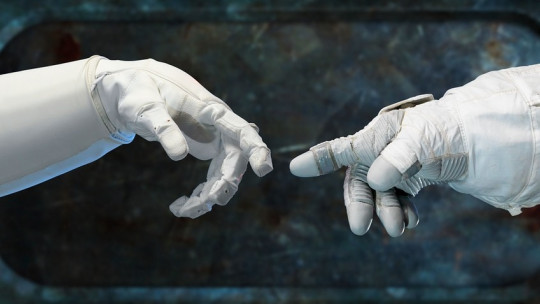
Human perception does not necessarily consist of processing a copy of reality in our brain, but is a more complex phenomenon. As the information passes through our senses, reaching our brain, it goes through a series of filters and, together, a constructive process is composed, and in some cases a series of perceptual anomalies can occur.
The psychopathologies of perception They are those that occur when a person perceives a stimulus or a group of stimuli that is within the reach of their sensory organs in a different way, so that a distortion occurs in the way of perceiving its formal characteristics.
A fundamental difference between the psychopathologies of perception and those of imagination is that in the former the perceived stimulus is present in front of the subject, although it is perceived in a distorted manner with respect to reality; while in the latter they are perceptual deceptions that cause a new sensory experience, given that they are false perceptions.
In this article we will take a closer look at what these psychopathologies of perception are and how they are usually classified.
What are psychopathologies of perception?
The different psychopathologies of perception are a series of perceptual distortions that occur when a stimulus in front of you is perceived in a different way given its formal characteristicsso it is accessible to the sensory organs of the subject who suffers from one of the psychopathologies of perception, and there may be two fundamental possibilities.
One would be when the subject has a perception that is different from the usual and/or more predictable one, taking as reference previous experiences in this regard, as well as the common way of perceiving that stimulus by other people and also the person’s own previous experiences with it. regarding the perception of said stimulus. The psychopathologies of perception in that case would be those distortions related to shape, size, distance, intensity, among others..
Another modality would be the one that occurs in those cases in which the person experiences a perception different from what should occur if they only took into consideration the formal or physical configuration of the stimulus, as occurs in the case of illusions. . In this case, psychopathology is not found in the perceptive organs, strictly speaking, but rather it is found in the perception that the person themselves elaborates from a specific stimulus; in other words, the way of constructing the perception of the same stimulus in your mind.

Types of psychopathologies of perception
Perceptual psychopathologies or perceptual distortions have been commonly classified among the following categories, with considerable consensus in this classification.
1. Depending on the intensity of the stimuli
In this category are those perceptual distortions related to the intensity with which stimuli are perceivedwhich can be in the following ways:
2. Depending on the quality of the stimulus
These anomalies in perception are normally related to the previous ones and usually refer to the colored visions and to perceive with greater or lesser clarityalthough they can also influence other senses such as touch, smell or taste.
3. Depending on the shape and/or size (metamorphopsias)
In this case we would find the following subdivisions depending on perceptual distortions with respect to the size and/or shape of the stimulus.
4. Depending on perceptual integration
In this classification there is three classes of perceptual integration anomalies.
-
Synesthesia: attributing a sensory perception of a stimulus to a sense that does not correspond.
- Agglutination (perceiving sensations that are different as a unit).
- Splitting (perceiving the elements of the same stimulus separately.
@image(id)
- You may find it interesting: “Associative cortex (brain): types, parts and functions”
Anomalies in the perception of stimulus intensity
This group includes psychopathologies of perception that They arise due to anomalies produced in the intensity at which the stimuli are perceived, and can occur either due to defect or excess.. “Hyperesthesias” are usually those that occur when stimuli are perceived with greater intensity than usual; while “hypoesthesia” occurs when stimuli are perceived with a lower intensity.
Another possibility within this type of perceptual anomalies would be when there is a total absence in the perception of the intensity of the stimuli, being in this case called “anesthesia”.
We could also find abnormalities in the perception of pain intensity, which can be called “hyperalgesia”, when that intensity of pain is perceived in an exaggerated way; a “hypoalgesia”, when pain is barely perceived; and finally, “analgesics”, which occur when the subject does not perceive any pain at all.
Anomalies in the perception of the intensity of a stimulus, if they occur with respect to sounds, can be of the following types: “hyperacusis”, which is when they are heard at a higher acoustic level than they actually have, “hypoacusis”. ”, in which exactly the opposite happens than in the previous one.
Anomalies in the perception of stimulus qualities
This type of psychopathology of perception is a class of anomalies that are usually accompanied by the previous ones (those of intensity) and refer to those perceptual distortions that are related to the perception of a stimulus with greater or lesser clarity than it should. be perceived, with greater or lesser detail or also in relation to perceptual distortions through other senses such as touch, smell and taste.
These perceptual anomalies They usually occur due to the consumption of certain drugs and/or the side effects of certain medications, as well as due to some neurological injuries.although they could also appear in some mental disorders, such as mood disorders or psychotic disorders.
An example of an abnormality of the qualities of a stimulus in a person with a psychotic disorder would be a case in which the subject states that a sweet food tastes bitter.
In the case of a person with depression, a perceptual anomaly could occur regarding the qualities of a stimulus, when he perceives everything with very dark, opaque or even colorless colors. In turn, if we ask him what colors a painting in front of us is made of, he will be able to list it correctly.
In all these cases, the sensory organs function correctlyso what is altered is the perception of the world of patients who present these psychopathologies of perception.
- Related article: “Gestalt Theory: fundamental laws and principles”
Anomalies in the perception of shape and/or size (Metamorphopsias)
The metamorphoses are psychopathologies of perception related to a series of distortions in the perception of the shape and/or size of objects. Within this category we can find “megalopsias” (macropsias), which consist of the perception of objects on a scale larger than the real one; while in the case of “micropsies” just the opposite occurs.
Then there are also “autometamorphopsias” that occur when the person perceives the parts of their own body in a distorted way.
- You may find it interesting: “Bálint syndrome: causes, symptoms and treatment”
Anomalies in perceptual integration
In this group are those psychopathologies of perception in which The person is not able to establish links or connections that usually exist between two or more perceptions that come from different sensory modalities..
For example, when a person watches television and has the feeling that what he sees and what he hears are not related, even though what he hears is what the person watching through the television is saying, this is what we could call “perceptual splitting”. On the contrary, when a “perceptual agglutination” occurs, a phenomenon completely opposite to that of perceptual splitting occurs.
In the event that a phenomenon known as “synaesthesia” occurs, there could be cases such as, for example, the person stating that they are able to see different colors depending on the characteristics of the frequency and timbre, among others, of a musical song you are listening to.








